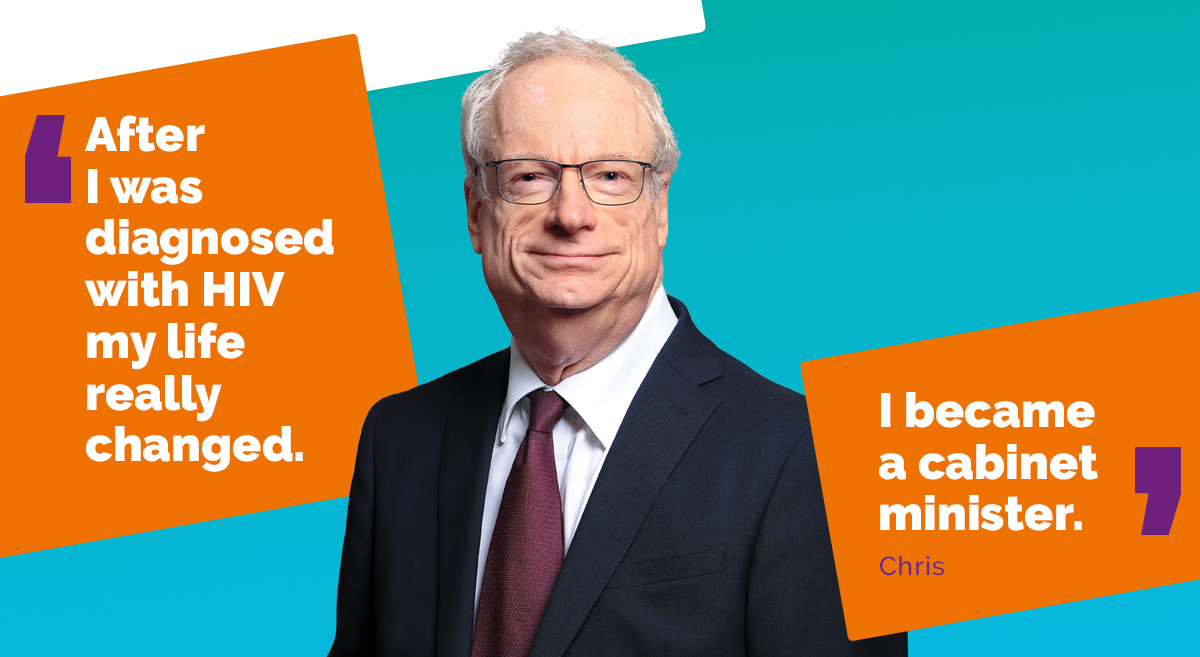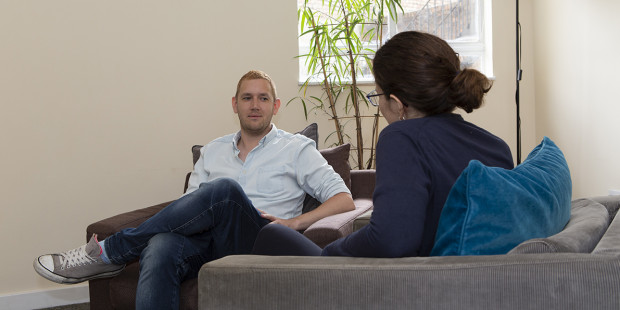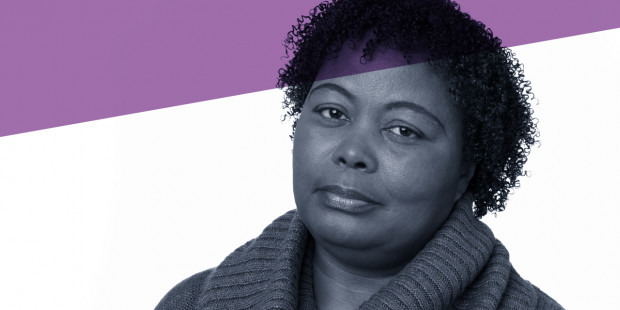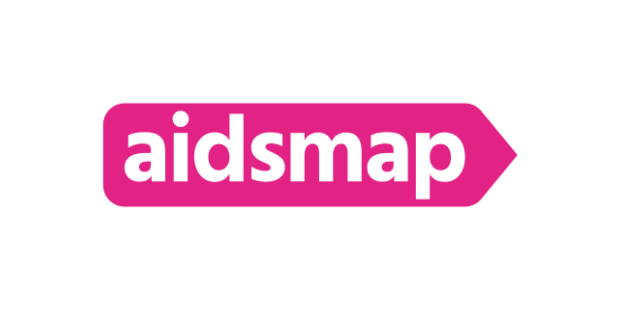
How common is HIV in the UK?
The most recent UK-wide estimate is that over 111,800 people are living with HIV in the UK. Of these, over 5,200 are undiagnosed and do not know they are living with HIV. Most recent data shows 4,700 people are living with undiagnosed HIV in England and 400 in Scotland, with figures for Wales unavailable at this time.
Diagnoses have been increasing since 2021. Prior to 2021, diagnoses were declining since their peak in 2005. In 2024, there were 5,793 HIV diagnoses in the UK excluding Northern Ireland, a decrease from 6,512 in 2023. 5,298 people were diagnosed with HIV in England in 2024, 375 in Scotland and 130 in Wales.
There was 4% decrease in new HIV cases (people who have not been previously diagnosed) in the UK in 2024 compared to 2023 (3,169 in 2023 to 3,043 in 2024),
Anyone can get HIV but people from some groups or parts of the world are more likely to be affected. In particular, men who have sex with men and Black African people are disproportionately affected.
Progress towards achieving the 2030 goal to end new cases of HIV
In November 2024, the UK Health Security Agency (UKHSA) stated that it is unlikely that we will meet the 2025 targets, but the 2030 target of zero new HIV transmissions is within our reach. The HIV Action Plan set an interim target of an 80% reduction in new HIV infections in England by 2025 comparing the 2019 diagnosis figure of 2,819. Considering that the figure of those first diagnosed in England in 2024 was 2,773, a figure nearly the same as in 2019, we are clearly off-track to achieve the 2025 goal, and therefore the 2030 goal.
HIV testing is essential so that everyone living with HIV can be offered lifesaving treatment, which also prevents onward HIV transmission. There has been progress in getting back testing to pre-COVID levels in sexual health services In England with the number of people tested in sexual health services increasing by 3% (1,277,723 to 1,318,795) between 2023 and 2024. Testing among gay and bisexual men is at record levels, but for heterosexual men testing rates are still 22% lower than pre-COVID. In Scotland, testing has now exceeded pre-pandemic levels, however testing rates in key settings – including sexual health services, GPs and prisons – are yet to recover.
It is encouraging to note that PrEP access has been improving in the UK, however, there are still challenges for equal access for all who might benefit from it. In 2024, there was a 7.7% increase in people accessing PrEP, with 111,123 people in England now receiving it. In 2024, 2,472 people in Scotland and 2,319 in Wales were prescribed PrEP for the first time.
HIV diagnoses
HIV diagnoses in England in 2023
There was 2% decrease in new HIV cases in England in 2024 compared to 2023 (3,169 in 2023 to 3,043 in 2024). There was also a 3% rise in testing in English sexual health services for the same period. There were 2,525 people diagnosed with HIV before continuing care in England in 2024, a 25% decrease from 3,363 in 2023. Including people diagnosed with HIV before continuing care in England, there were 5,298 HIV diagnoses in England in 2024.
Data from the UK Health Security Agency (UKHSA) shows that 5,298 people were diagnosed with HIV in England in 2024.
- 48% (2,525 of 5,298) 48% (2,525) of people diagnosed in England were reported as previously diagnosed abroad. 70% of those with a reported viral load were virally suppressed within a month of their diagnosis in England showing access to HIV treatment abroad; people with an undetectable viral load cannot pass on HIV.
- There was 2% decrease in new HIV cases in England in 2024 compared to 2023, There was also a 3% rise in testing in English sexual health services in 2024. New HIV diagnoses among gay and bisexual men in England decreased by 6% from 859 in 2023 to 810 in 2024, though ethnic minority men constituted 35% of all new diagnoses in this group. Diagnoses continued to rise for heterosexual men outside of London, as well as gay and bi men from ethnic minorities.
- Data from 2024 shows a 7% decline in the number of 18- to 24-year-olds testing in this age group while continuing to increase across all other ages, the only group where testing rates have still not recovered to pre-COVID levels.
- Of the 2,773 people first diagnosed in England, 29% were gay, bisexual or other men who have sex with men. Half of all new diagnoses first made in England were among people exposed through sex between men and women. Of the 1,383 heterosexual people diagnosed with HIV in England in 2024, over 50% were of Black African ethnicity.
- London continues to have the highest rates of HIV in England, but over the past 10 years, the number of new diagnoses among people living outside London has exceeded the number living in London. In 2024 increases were concentrated outside of London – the capital saw a 10% decrease in diagnoses amongst heterosexual men, but outside of London there was a 9% increase. Women experienced a 1% decrease (197 to 196) in diagnoses outside London and a 0.5% decrease among women living in London.
- Of those diagnosed with HIV in England in 2024, 42% were diagnosed at a late stage (when HIV has already started to damage the immune system). The number of late diagnoses increased among heterosexual women by 4% and by 1% among heterosexual men but decreased by 11% among gay and bisexual men. Late diagnoses increased among people aged 25 to 34 years from 29% in 2023 to 35% in 2024.
- People aged 50 years and over had the highest proportions of late diagnosis (56% for those aged 50 to 64 years, 61% for those aged 65 years and over). 52% of heterosexual men, 47% of people of Black African ethnicity, 43% of people with Asian ethnicity, and 46% of women were diagnosed late.
The impact of opt-out HIV testing in an emergency department (ED) setting on the rise in new diagnoses first made in England is detailed in the latest HIV Action Plan report. UKHSA states that opt-out testing has made a huge contribution in relation to the provision of HIV testing in areas of very high diagnosed HIV prevalence since April 2022. In 2024, 8% of all new HIV diagnoses were made through opt-out testing in A&Es.
HIV diagnoses in Scotland in 2023
There are now an estimated 6,467 people living with HIV in Scotland, 94% (6,079) of whom are diagnosed. Around 400 people in Scotland are estimated to be living with undiagnosed HIV.
375 people were diagnosed with HIV in Scotland in 2024.
- There were 125 new first ever HIV in Scotland in 2024, consistent with 126 in 2023.
- In 2024, 116,981 people tested for HIV in Scotland. Overall testing numbers for HIV exceeding pre-COVID levels for the first time, however HIV testing in key settings – including sexual health clinics, GPs and prisons – are still lagging behind.
- The recent trend of heterosexual diagnoses outnumbering that among gay, bisexual and other men who have sex with men is continuing in Scotland. Of those first diagnosed with HIV in Scotland in 2024, 29% were among gay, bisexual or other men who have sex with men, 55% were heterosexually acquired and fewer than five were linked to people who inject drugs.
- In Scotland, 21% of first ever diagnoses in 2024 were at a late stage.
HIV diagnoses in Wales in 2023
In 2024, there was a total of 130 new cases of HIV in Wales, comprising of 73 new first-time diagnoses and 57 people previously diagnosed with HIV and continuing care in Wales.
- New diagnoses fell by nearly 20% between 2023 and 2024, from 91 to 73.
- Of the 73 new HIV diagnoses in 2024: 78% were male; 62% were White, and 45% were amongst heterosexuals.
- 45% of people diagnosed with HIV in 2024 were diagnosed late, when HIV has already begun to damage a person’s immune system.
- Of the 133,699 people who accessed HIIV testing in 2024, almost a fifth (18%) did so through Wales’ national HIV and STI postal testing service.
PrEP
PrEP in England
PrEP uptake has been increasing but inequalities remain with unmet needs particularly amongst heterosexuals. There are currently 111,123 people on PrEP in England.
- 86% of gay, bisexual and other men who have sex with men who had a PrEP need, had that need identified when accessing sexual health services in England, compared to 57.5% of heterosexual men and 53% of heterosexual and bisexual women.
- Initiation or continuation of PrEP among those with a PrEP need was highest in gay, bisexual and other men who have sex with men at 78.6% compared to 39.0% in heterosexual men and 40.9% in heterosexual and bisexual women. Initiation or continuation of PrEP was lowest among Black African heterosexual women (34.6%), followed by Black African heterosexual men (36.4%).
PrEP in Scotland
Uptake of PrEP has increased in Scotland with 2,472 people attending sexual health services to access PrEP for the first time. This was the second highest monthly average since implementation of the programme in July 2017. Of the 2,472 people accessing PrEP for the first time in 2024, only 88 were women.
Since July 2017, 13,886 individuals have been prescribed PrEP in Scotland. 89% of those ever prescribed HIV PrEP in Scotland were gay, bisexual, and other men who have sex with men.
PrEP in Wales
PrEP uptake in Wales is at its highest level since it was introduced. In 2024, 2,319 people were prescribed PrEP for the first time, representing an increase of more than 4% since 2023. 98% of people accessing PrEP in Wales are male.
HIV care outcomes
HIV care outcomes in England
In 2024, 103,689 people were accessing HIV care in England compared to 100,063 in 2023.
- The average age of people living with HIV in the England is getting higher – over half of people (52%) receiving specialist HIV care in 2024 were over 50, compared to one in five in 2007.
- There were 282 trans and gender diverse people accessing HIV care in England in 2024, compared to 243 in 2022.
- Treatment coverage in adults accessing care in England is 99% (102,485 of 103,515).
- 98% (93,375 of 95,696) of people living with diagnosed HIV in England in 2024 (with a reported viral load) were virally suppressed and therefore unable to pass on the virus to a sexual partner.
- In 2024, treatment coverage was lowest among people aged 15 to 24 years (96%) and ranged from 98% to 99% for all other age groups.
The UKHSA reports that the UNAIDS 95-95-95 targets were met in England in 2024 for the sixth consecutive year, with 95% of all those with HIV being diagnosed, 99% of those diagnosed receiving treatment, and 98% of those treated being virally suppressed and thus unable to pass on the virus. However, the UKHSA acknowledges that when missing data and information for those not in care are taken into account, the estimates will vary. It is estimated that up to 12,065 people in England have been previously diagnosed as living with HIV but are not currently accessing care (known as ‘lost to care’). The UKHSA states that estimates incorporating adjustments for missing information and for people not seen for care will be published in a future report.
HIV care outcomes in Scotland
As of 2024:
- 94% of people estimated to be living with HIV in Scotland are diagnosed.
- 93% of those with a diagnosis had attended HIV specialist services in the previous 18 months.
- 98% of people attending specialist services are accessing antiretroviral treatment.
- 95% of people accessing treatment have an undetectable viral load.
Public Health Scotland report that around 7% of people diagnosed and living with HIV in Scotland are not engaged in HIV treatment and care – meaning they had not attended HIV specialist services in 18 months – and a further 926 people are classed as being ‘lost to follow-up’, meaning they have not attended HIV specialist services in Scotland for more than 36 months and also had no evidence of non-HIV related NHS activity within 36 months.
HIV care outcomes in Wales
2,670 people accessed HIV care in Wales in 2024, of which 98% (2,616) were receiving treatment and 99% had achieved viral load suppression. Public Health Wales does not report on the number of people living with HIV who are not accessing HIV care and treatment.
More statistics for the UK, England and Wales are available on the Government website:
More statistics for Scotland are available on the Scottish Government website:
The Welsh government has committed to developing a new national data collection system in its HIV Action Plan for Wales. This should give more detail on different populations and local areas.






